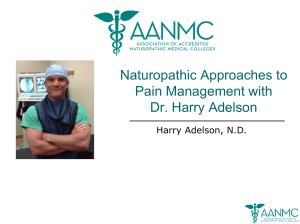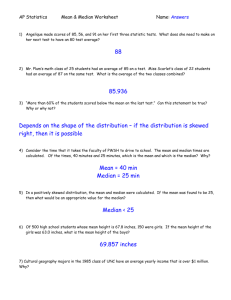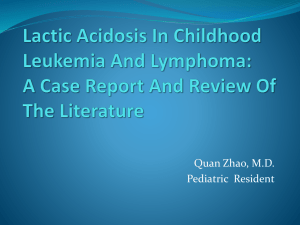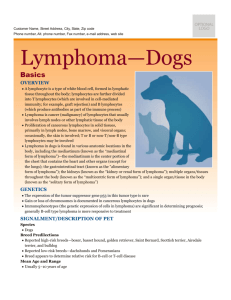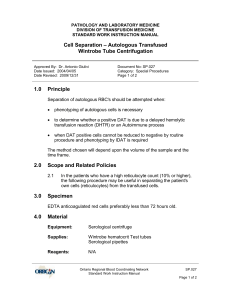FOLLOW-UP DATA OF FLUDARABINE
advertisement
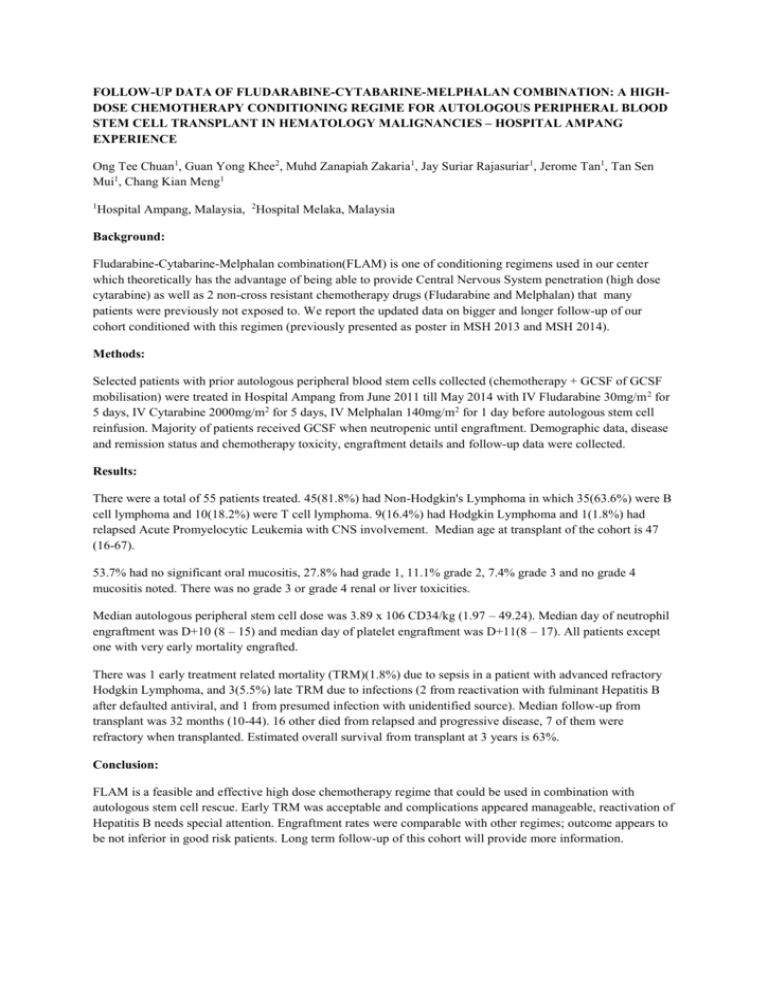
FOLLOW-UP DATA OF FLUDARABINE-CYTABARINE-MELPHALAN COMBINATION: A HIGHDOSE CHEMOTHERAPY CONDITIONING REGIME FOR AUTOLOGOUS PERIPHERAL BLOOD STEM CELL TRANSPLANT IN HEMATOLOGY MALIGNANCIES – HOSPITAL AMPANG EXPERIENCE Ong Tee Chuan1, Guan Yong Khee2, Muhd Zanapiah Zakaria1, Jay Suriar Rajasuriar1, Jerome Tan1, Tan Sen Mui1, Chang Kian Meng1 1 Hospital Ampang, Malaysia, 2Hospital Melaka, Malaysia Background: Fludarabine-Cytabarine-Melphalan combination(FLAM) is one of conditioning regimens used in our center which theoretically has the advantage of being able to provide Central Nervous System penetration (high dose cytarabine) as well as 2 non-cross resistant chemotherapy drugs (Fludarabine and Melphalan) that many patients were previously not exposed to. We report the updated data on bigger and longer follow-up of our cohort conditioned with this regimen (previously presented as poster in MSH 2013 and MSH 2014). Methods: Selected patients with prior autologous peripheral blood stem cells collected (chemotherapy + GCSF of GCSF mobilisation) were treated in Hospital Ampang from June 2011 till May 2014 with IV Fludarabine 30mg/m 2 for 5 days, IV Cytarabine 2000mg/m2 for 5 days, IV Melphalan 140mg/m2 for 1 day before autologous stem cell reinfusion. Majority of patients received GCSF when neutropenic until engraftment. Demographic data, disease and remission status and chemotherapy toxicity, engraftment details and follow-up data were collected. Results: There were a total of 55 patients treated. 45(81.8%) had Non-Hodgkin's Lymphoma in which 35(63.6%) were B cell lymphoma and 10(18.2%) were T cell lymphoma. 9(16.4%) had Hodgkin Lymphoma and 1(1.8%) had relapsed Acute Promyelocytic Leukemia with CNS involvement. Median age at transplant of the cohort is 47 (16-67). 53.7% had no significant oral mucositis, 27.8% had grade 1, 11.1% grade 2, 7.4% grade 3 and no grade 4 mucositis noted. There was no grade 3 or grade 4 renal or liver toxicities. Median autologous peripheral stem cell dose was 3.89 x 106 CD34/kg (1.97 – 49.24). Median day of neutrophil engraftment was D+10 (8 – 15) and median day of platelet engraftment was D+11(8 – 17). All patients except one with very early mortality engrafted. There was 1 early treatment related mortality (TRM)(1.8%) due to sepsis in a patient with advanced refractory Hodgkin Lymphoma, and 3(5.5%) late TRM due to infections (2 from reactivation with fulminant Hepatitis B after defaulted antiviral, and 1 from presumed infection with unidentified source). Median follow-up from transplant was 32 months (10-44). 16 other died from relapsed and progressive disease, 7 of them were refractory when transplanted. Estimated overall survival from transplant at 3 years is 63%. Conclusion: FLAM is a feasible and effective high dose chemotherapy regime that could be used in combination with autologous stem cell rescue. Early TRM was acceptable and complications appeared manageable, reactivation of Hepatitis B needs special attention. Engraftment rates were comparable with other regimes; outcome appears to be not inferior in good risk patients. Long term follow-up of this cohort will provide more information.






